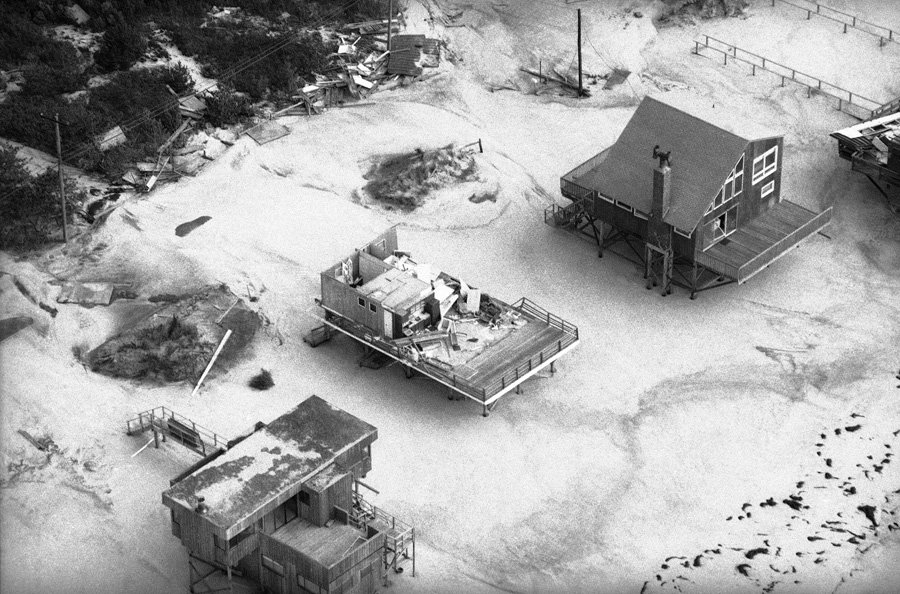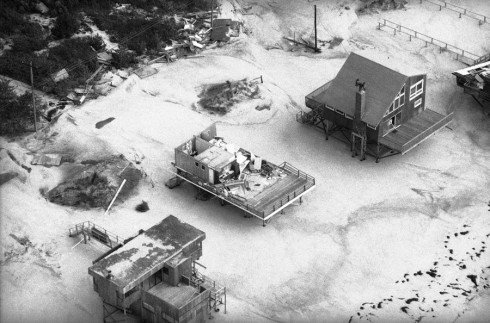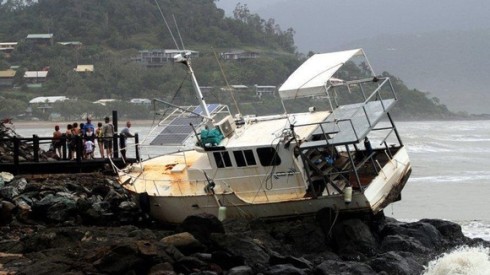Climate Change, Resilience, Communication


Climate Change
Last week I listened to a webinar on climate change discussing findings of the draft report from the National Climate Assessment and Development Advisory Committee. Not much has changed from the year 2000 report, or the 2009 report. Well, a few changes: the science has improved, climate change is now being stated directly as a result of human activity and the report is more accessible and understandable to the public at large. The public that actually takes the time to read it, that is. How communities engage with science and government is a hot topic and will continue to be. The idea of citizen scientists was mentioned during the webinar and it has been in the news quite a bit. I’ve written about it here, but after today’s presentation, it triggered some new thinking and I pondered it a bit more in terms of climate change and planning resilient communities.
Engineering Community Resilience
With the recent round of floods and bush fires, particularly in Queensland, Victoria and Tasmania, and with Hurricane Sandy in the northeastern United States, I’ve been thinking more about how we engineer our communities and our transportation networks to withstand the dramatic stresses placed on them by natural disaster events such as these. In the face of extreme and more frequent weather events, we must begin to look at how we protect investments, not how do we avoid it, but how do we work with it once faced with the situation; how can our societal networks “adapt” to natural events. After hitting the power-on button after a disaster, how long does it take before we are up and running at full speed? It’s definitely not automatic and there is a lag time, but the mission should be to reduce that lag time as much as possible. We can do that through better planning of our communities, both urban and rural, from top to bottom.
Outdated Planning Manual
Jane Jacobs in her book, The Life and Death of Great American Cities, wrote the way we plan cities is outdated. Those thoughts were from the late 1950s; I wonder what she would think at the progress, or lack of, made now. While Ms. Jacobs was not an urban planner, she was an astute observer of city life. We have been planning to the same model for years, basing our land use and transportation plans on activity centers and primary uses as if these things were completely and utterly independent. When in reality, today more so than ever, emphasis should be placed on the connections between and among uses, from primary to tertiary uses and beyond. Emphasis should also be placed on addressing aging infrastructure. Outdated, roads, buildings, bridges, sidewalks, subways, telephone lines, sewers; all of these facets of modern society that once made life convenient can actually make life more inconvenient if technology does not keep up with the pace of increasing population and demand. It is a tough task to balance the needs of a community, of a nation, but attention to rediscovering and reengineering our primary uses to connect with present and future day society has to be part of this century’s new planning paradigm.
Community Communication
How does this national climate assessment report actually impact individuals? What does the public need to know? What does government and science need to tell people? I think ultimately that people have a desire to know what goes on in their communities; but they’re busy, they elect people and trust them to hire staff that will get the job done. And there is this mentality that they just want things to work and society grows cranky when things don’t work. Think about water pipes. An invisible zigzagging network buried underground. Much thought isn’t given them until they burst and the faucets run dry. Adding to the problem is that the public doesn’t understand how antiquated our infrastructure is, be it water pipes, bridges, or telephone lines. And public refusal to pay for a system’s upgrading because water has always been cheap just adds to the complex ability to make change happen. But I believe it can.
It all boils down to communication, at the basic, most simplistic level. That’s why it is critical governments do a better job at explaining and giving information to citizens when disasters strike AND details about the recovery and clean up process OR explaining why adaptation and mitigation measures need to be taken because not everyone understands why systems that date back to the 19th century can’t handle pressures from the 21st century. I can’t speak for other countries, but the “red tape” political pomp and circumstance on parade in the U.S. needs to shift toward a “green tape” common sense implementation attitude. Waiting over three months for recovery funds to come through after Hurricane Sandy hit inhibits community rebuilding and cuts to the psychological core of those affected.

Citizen Scientists Participation
Popularity of science among the masses is growing and should be engaged. So how can citizen scientists help? With all this talk of using ordinary citizens to collect data for large-scale research projects and as budgets tighten and staffs decrease, I think there will be a greater role for the community at large to help provide answers to research questions. To start with, our scientific organizations will need to use the cerebral thought process of corporations. The scenario is not that citizen scientists will be out there running amok with data; a trained scientist would no doubt be in charge. Like a project manager would in a big corporation, they would have people reporting to them, following the protocols, procedures and plans they have discussed to achieve a certain goal. I think this is the way science will have to move in order to stay somewhat viable as we attempt to solve the looming problems we face in the future.
Science, the community, government and private industry all need to be present and active partners communicating as we move forward designing our cities and countrysides in a certainly uncertain world. Policy choices should have been made 10 plus years ago as an attempt to deal with climate change, but hindsight is always 20/20. While this piece speaks mainly to the developed world, we shouldn’t ignore the rapid urbanization that is sweeping across the developing world, with many key urban issues not being fully explored. The municipal level has an opportunity to be a catalyst of change. As cities think about how to assess their risks and incorporate resiliency measures into their town planning, the population may actually be able to ebb and flow with climate disruptions.
Burnes K (2013-02-26 00:10:57). Climate Change, Resilience, Communication. Australian Science. Retrieved: Dec 29, 2025, from https://ozscience.com/environmental-science/climate-change-resilience-communication/
 Follow
Follow